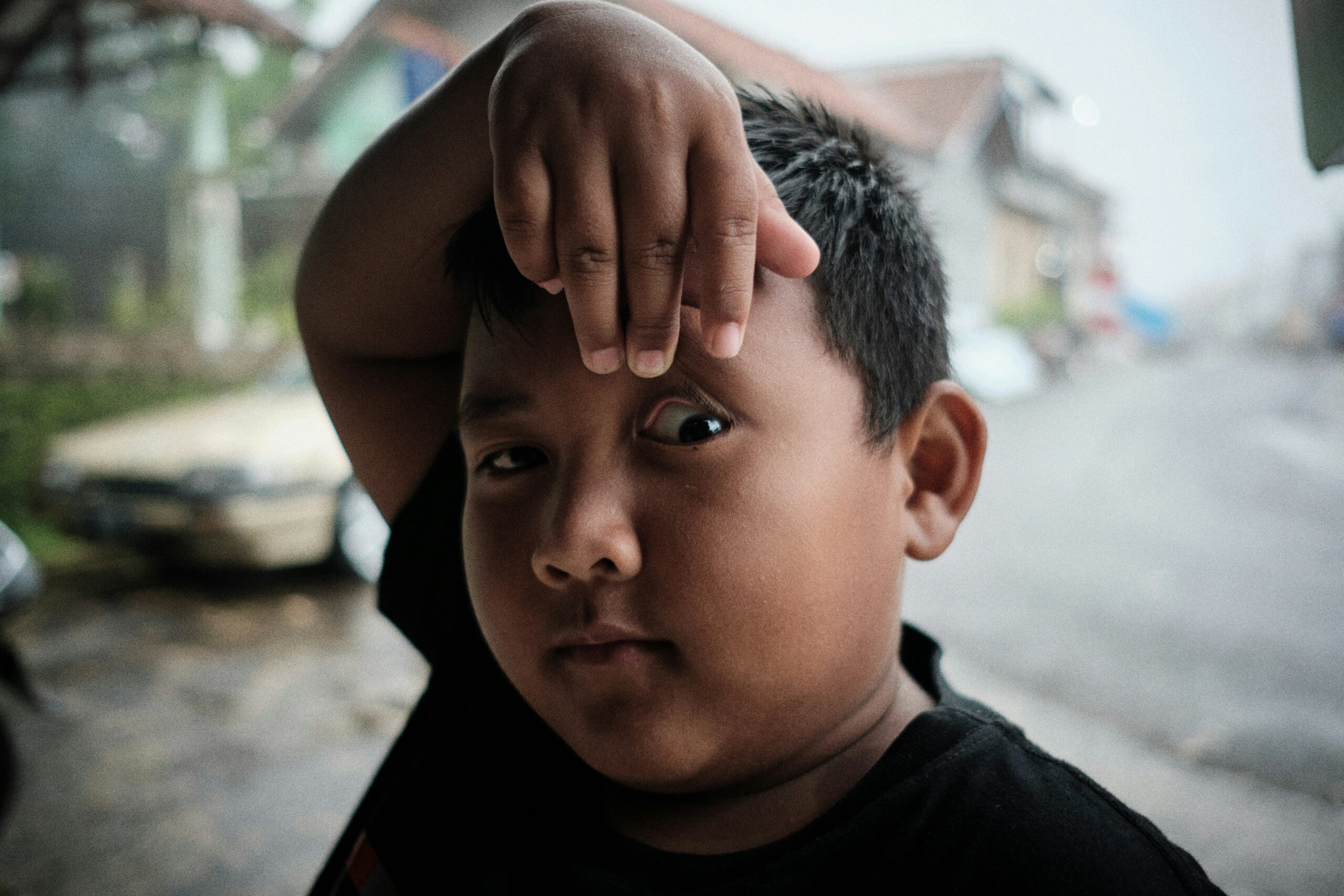I recently read about the 17 key visual skills that shape how we see and respond to the world. It made me wonder – How many young badminton players struggle not because of poor technique, but because their eyes and brain aren’t yet working together as efficiently as they could?
We often focus on fitness, footwork, and racket control. But when a child keeps missing shots, reacts late, or misjudges distances, it might not be their talent, it could be a visual skills gap.
The encouraging part is: vision skills can be trained and strengthened, just like muscles or coordination. Once a player learns to track, focus, and react better, their confidence – and joy – on court often return quickly.
The 17 Eye Skills (Explained Simply for Badminton)
1. Eye Movement Control
Your eyes follow the shuttle up, down, left, and right, without losing track.
Think: Your eyes are two teammates who must move together to chase the shuttle.
2. Binocular Coordination
Both eyes work together as one team, helping you see exactly where the shuttle is.
Think: Two eyes become one super camera that guides every shot.
3. Saccades
Quick jumps your eyes make when switching from one spot to another, like from shuttle to opponent.
Think: Your eyes hop around the court like mini frogs checking what’s next.
4. Pursuits
Smoothly following the moving shuttle as it flies.
Think: Your eyes glide like you’re watching a bird fly through the air.
5. Convergence
Your eyes turn inward to see things close up, like when the shuttle is right in front of you at the net.
Think: Your eyes “meet” to make that net shot crystal clear.
6. Accommodation Flexibility
Switching focus between near and far objects quickly, from your opponent to the umpire, for example.
Think: Your eyes zoom in and out quickly like a camera lens.
7. Accommodation Endurance
Keeping focus strong through long rallies and matches without your vision getting blurry or tired.
Think: Your eyes stay steady and sharp through every game.
8. Visual Memory
Remembering what you’ve seen before, like where your opponent usually hits.
Think: “Last time, they smashed to my backhand!”
9. Visual Thinking (Visual/Spatial Learning)
Using what you see to plan your next move and predict plays.
Think: Playing chess with a racket, you’re thinking one step ahead.
10. Central Visual Acuity
Seeing clearly right in the middle of your vision, like spotting the shuttle sharply.
Think: Clear eyes mean faster reactions.
11. Peripheral Vision (Side Vision)
Seeing what’s around you, opponent, court lines, your partner, without turning your head.
Think: You see the whole court, not just the shuttle.
12. Depth Perception
Knowing how far away the shuttle is so you can time your swing perfectly.
Think: You judge distance like a pro, no more hitting too early or too late.
13. Color Perception
Being able to spot the shuttle clearly even in tricky lighting.
Think: Finding the white shuttle easily against any background.
14. Gross Visual-Motor
Using your vision to guide big body movements, running, lunging, jumping.
Think: Your eyes are the coach telling your legs where to go.
15. Fine Visual-Motor
Helping with small, precise movements like net spins or slices.
Think: Eyes + tiny wrist/finger control = net magic.
16. Visual Perception
Understanding everything you see on the court, the rally, the lines, your opponent’s body language.
Think: Your brain’s radar for the whole game.
17. Visual Integration
Using your eyes, body, and other senses together, seeing, moving, hearing, reacting all at once.
Think: Vision and movement dancing perfectly in sync.
Too many feels/sounds the same
For a novice reader, it might seem that many visual skills overlap, and in some ways, they do. But when you look closer, you’ll realize that each skill plays an important role on its own. Being able to identify which specific skill a child struggles with is truly valuable.
Take Eye Movement Control, Binocular Coordination, and Pursuits, for example. They may sound similar, but they’re quite different. Imagine a child whose eyes move smoothly, yet the two eyes don’t work together, or one eye tracks faster while the other lags behind the moving target. These are not the same challenges, and recognizing the difference can make all the difference in helping a child succeed.
A Couple of Vision Practices (No Screens Needed)
You can build many of these visual skills right on court or in a park, using simple, playful drills that kids already enjoy:
| Skill | On-Court Practice |
|---|---|
| Eye Movement Control / Pursuits | Rally gently while keeping your eyes fixed on the shuttle, don’t turn your head too much. |
| Depth Perception | Do “catch the shuttle” drills: toss and catch with a partner before hitting. Focus on how far it travels. |
| Peripheral Vision | During shadow footwork, call out colored cones or targets placed at the edges of your sight. |
| Accommodation Flexibility | Alternate between net kills and deep clears, your eyes must adjust from near to far. |
| Binocular Coordination | Practice tracking high lifts or clears under bright light, eyes must work together smoothly. |
| Visual Integration | Combine footwork, reaction, and shuttle tracking in small-court games or rally drills. |
| Visual Memory | After a short rally, ask: “Where did the last three shots go?” helps build pattern recall. |
These exercises train focus, awareness, and timing without any screens — just movement, light, and real play.
Helping Your Child See and Play Better
Sometimes, even the strongest, most athletic children feel embarrassed when they struggle at badminton, especially if they’re used to doing well in other sports or school. When vision skills haven’t caught up with their body, it can look like “clumsiness” or “slow reactions,” but it’s not their fault.
The truth is: many kids just need a bit of vision training to help their eyes and brain work together more efficiently. Sports optometrists or vision specialists can assess these skills and design fun, game-like exercises to strengthen them.
As parents, the best thing we can do is to stay curious and supportive, not critical. Encourage practice, notice small improvements, and remind your child that being “bad” at badminton today doesn’t mean they lack ability. It may simply mean their eyes are still learning the game.
When their vision and coordination align, everything changes: confidence grows or returns, movement feels natural, and games becomes a joyful one.

